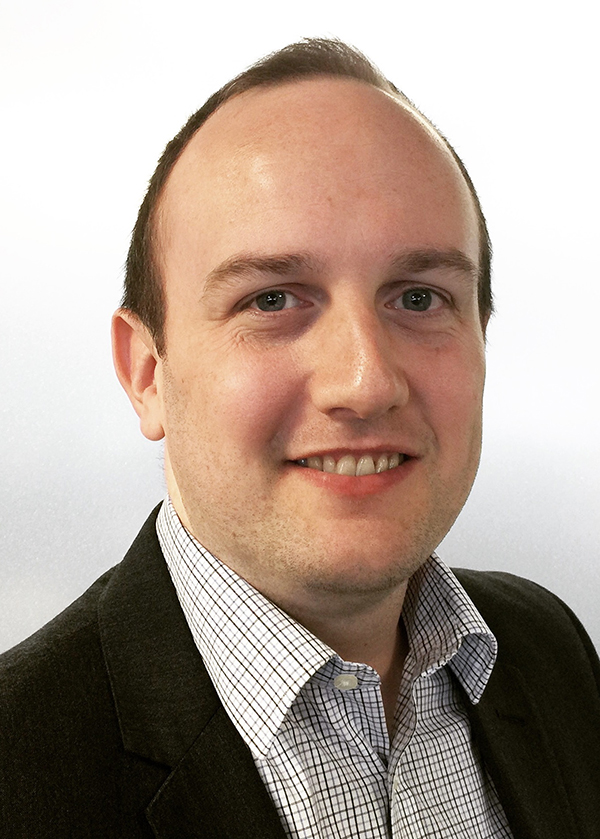Take Five: Taking stock of countries' progress on developing inclusive disaster risk reduction strategies
Date:

Kevin Blanchard is the Director of DRR Dynamics, a UK based research organisation focused on ensuring the inclusion and empowerment of marginalized groups in disaster risk reduction. He has over 14 years’ experience in developing inclusive disaster risk reduction and humanitarian policy for national governments, international agencies and NGO’s. Mr. Blanchard is working with UN Women as a consultant in inclusive disaster risk reduction policy.
It’s been five years since the adoption of the Sendai Framework for Disaster Risk Reduction 2015-2030. Tell us why this framework is important and how it helps groups of people at risk of disasters? Where have you seen the most progress and where are the gaps?
The Sendai Framework is groundbreaking in its scope and focus on the inclusion of marginalized groups. Adopted in Sendai, Japan, in 2015, it provides clear targets and priorities for countries to better understand and manage disaster risk, invest in disaster reduction, resilience, preparedness and response. Over a 15-year period, it aims to substantially reduce the loss in lives, livelihoods and negative impacts on health and the environment when disasters strike.
However, as my research assistant, David A. Torres, and I found during our work, many countries are still behind on developing inclusive disaster policy for the marginalized groups covered in the Sendai Framework (women, children and youth, persons with disabilities, poor people, migrants, indigenous peoples and older people).
Whilst there is ongoing work in many countries, we’ve found only 26 out of a possible 193 Member States have policy related to disaster risk that covers all of the above mentioned groups.
How is climate change and disasters impacting vulnerable groups?
Disasters are undoubtedly being increased by the climate crisis (both in terms of frequency and severity) and unfortunately the groups who are most marginalized in day to day life, are also the groups most impacted by disasters.
Case in point, today is the International Day of Persons with Disabilities. People with disabilities (either physical or mental-health related) often have greater levels of risk in disasters than those with no physical or mental disabilities. As such, policy makers need to recognize that those in society with a disability (visible or otherwise) may need specific consideration during their policy development to provide an inclusive response.
Why is it important to engage marginalized groups in climate change mitigation and disaster risk reduction?
Disasters and climate change impact people differently based on a huge number of variables. From the country you’re living in, your relative wealth, your status, gender, age, sexuality, physical and mental capacities etc. can all shape the amount of risk you experience and how quickly you’re able to bounce back from a disaster. To design the most inclusive and representative policy that ensures all in a society are given the same access to help and services, engagement with marginalized groups is essential.
As a white, able-bodied cis-male I cannot understand what the specific needs are for a woman of colour who has a mobility issue, nor can I understand the needs of a migrant or refugee community. So as policy makers, it’s our responsibility to engage with those groups, to listen and learn.
What policies and actions are needed to protect and empower marginalized groups in disaster risk reduction?
I think at the most basic level, recognition that these communities may have different requirements is a good start. Disasters and emergency events are complex and a one-size-fits-all approach to policy will rarely work for all of the community. Policy makers and disaster professionals must try and ensure that all the community is able to recover from a disaster and ultimately be more resilient next time.
Equally, we must recognize the unique and vital skills and knowledge that marginalized groups can bring to the policy-development table. Additional viewpoints, practical knowledge on risk management, community engagement and outreach, are all areas which marginalized groups have been shown to bring to more traditional policy development systems.
Failing to include these groups in your own policy development process is to ignore some vital and must-have knowledge.
Can you tell us about the policy tracker you have developed in partnership with UN Women and how it’s taking stock of countries' progress on developing inclusive disaster risk reduction strategies and policies?
The tracker is a snapshot of UN Member States and their progress on achieving an inclusive disaster risk reduction strategy. Using data online, we’ve collated any government policy or strategy (legislation or otherwise) to show which governments are currently including marginalized groups within their work.
The tracker shows we have a lot of work left to do with a large number of countries having no obvious (or publicly accessible) strategy for one or more marginalized groups and with over 50 countries not showing any policy for marginalized groups.
At UN Women and DRR Dynamics we hope that now that this policy tracker is publicly available, governments and others will help fill the gaps by sharing with us policies in place or in progress, and our tracker will be updated accordingly. Our team also stands ready to provide support for the development of inclusive and gender-responsive disaster risk reduction policies and the Women’s Resilience to Disasters Knowledge Hub provides a wealth of information and tools to assist as well.
Visit our new progress tracker to learn more about progress in inclusive disaster risk reduction policies. Please join our Community of Practice on Women’s Resilience and connect with us via Twitter and LinkedIn for the latest updates!